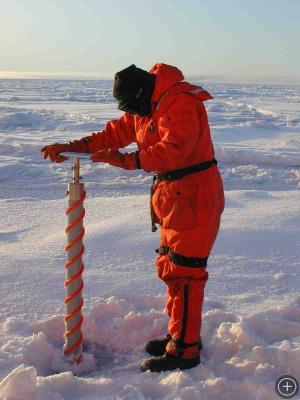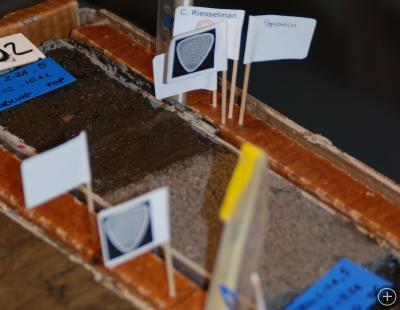Ice and Sediment Cores
Anyone with a messy desk understands one of the cornerstones of earth sciences: newer stuff collects on top of older stuff. It’s this fact that allows us to reconstruct the past using ice and sediment cores drilled from ice sheets and from the sea floor.
The enormous ice sheets that cover Greenland and Antarctica are up to several miles thick. They contain layer upon layer of snow that fell, never melted, and compacted into glacial ice. Within this ice are clues to past climate known as proxies.
For example, gas bubbles trapped in the ice contain chemical clues that reveal past temperature. The same bubbles tell us the concentration of atmospheric gases—including important greenhouse gases such as carbon dioxide and methane. Other material found in the ice, such as pollen, dust, and ash, provide information about sea level, precipitation, volcanoes, forest fires, the extent of deserts, and even the amount of energy coming from the sun.
While data from ice cores stretches back over 500,000 years into the past, sediment cores have been used to look even farther back in time, up to 200 million years ago.
In the ocean, a continual rain of fine sediment collects on the sea floor, forming a thick layer of sediment up to 5.6 miles (9 km) thick. Most of this sediment is made up of the miniscule shells of microscopic sea life. Since particular microbes live only under particular environmental conditions, scientists can use them to track changes in water temperature and chemistry over millions of years. As with ice cores, ash, dust, and pollen found among the layers can tell of other environmental events and conditions taking place around the globe at that time.












